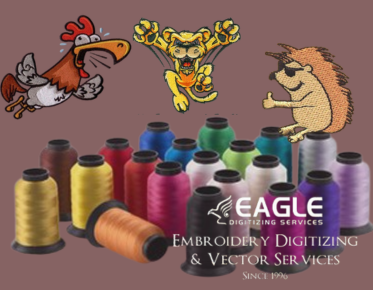Why are sustainable materials and eco‑friendly practices becoming important in modern embroidery?
In recent years, the embroidery industry has seen a significant shift towards the use of sustainable materials and eco-friendly practices. This change is driven by a growing awareness of environmental issues and a demand for more responsible production methods. As consumers become more conscious of their environmental footprint, they are increasingly seeking products that align with their values, including those in the realm of fashion and textiles.
The Rise of Eco-Conscious Consumers
Today's consumers are more informed and concerned about the impact of their purchases on the environment. This awareness has led to a demand for products that are not only high in quality but also sustainable. In the embroidery industry, this means using materials that are sourced responsibly and produced with minimal environmental impact. Eco-friendly practices in embroidery include using organic threads, recycled fabrics, and non-toxic dyes. These materials not only reduce the carbon footprint but also appeal to consumers who prioritize sustainability in their purchasing decisions.
Benefits of Sustainable Embroidery Materials
Using sustainable materials in embroidery offers several benefits. Firstly, it reduces the environmental impact of production. Organic and recycled materials require less energy and water to produce, and they generate fewer emissions compared to conventional materials. Additionally, sustainable materials often result in higher quality products that are durable and long-lasting. This durability is a key selling point for consumers who are looking for value in their purchases.
Innovation in Sustainable Embroidery
The push for sustainability has also spurred innovation within the embroidery industry. Companies are investing in research and development to create new materials and techniques that are both eco-friendly and efficient. For example, advancements in embroidery digitizing technology have made it possible to produce intricate designs with less waste. Digitizing services, such as those offered by Eagle Digitizing, ensure that designs are optimized for minimal thread usage and efficient production, further reducing environmental impact.
Challenges and Opportunities
While the shift towards sustainable materials presents numerous opportunities, it also comes with challenges. One of the main challenges is the cost associated with sourcing and producing eco-friendly materials. These materials can be more expensive than their conventional counterparts, which can impact pricing and profitability. However, the growing demand for sustainable products presents a significant opportunity for businesses to differentiate themselves in the market. By adopting eco-friendly practices, companies can attract a loyal customer base that values sustainability.
The Role of Technology in Promoting Sustainability
Technology plays a crucial role in promoting sustainability in embroidery. Advanced digitizing services allow for precise control over the embroidery process, reducing waste and improving efficiency. Companies like Eagle Digitizing leverage their expertise in digitizing to create designs that are not only beautiful but also sustainable. Their services include testing and optimizing designs to ensure they run smoothly on machines, minimizing thread breakage and waste.
Future Trends in Sustainable Embroidery
Looking ahead, the trend towards sustainability in embroidery is expected to continue. As technology advances and consumer demand for eco-friendly products grows, more companies will likely adopt sustainable practices. This shift will not only benefit the environment but also enhance the reputation and competitiveness of businesses in the embroidery industry. Companies that embrace sustainability will be well-positioned to meet the needs of the modern consumer and thrive in an increasingly eco-conscious market.
Embracing a Sustainable Future
As the embroidery industry continues to evolve, the importance of sustainable materials and practices cannot be overstated. By prioritizing sustainability, businesses can contribute to a healthier planet while meeting the demands of a growing segment of eco-conscious consumers. The future of embroidery lies in innovation and responsibility, and those who embrace these values will lead the way in shaping a more sustainable industry.
In conclusion, the integration of sustainable materials and eco-friendly practices in modern embroidery is not just a trend but a necessary evolution. As the industry adapts to meet the challenges of environmental sustainability, it opens up new avenues for creativity and growth. The commitment to sustainability will define the future of embroidery, offering a path towards a more responsible and prosperous industry.



